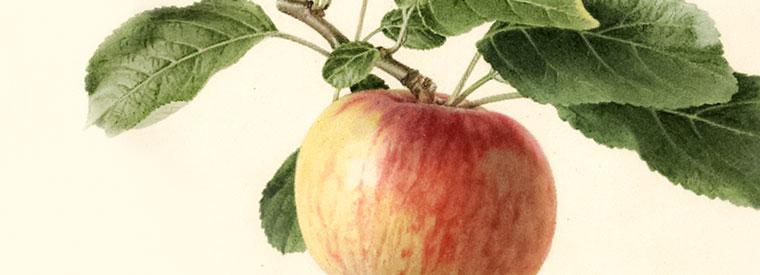Stay me with flagons; comfort me with apples.

Fruit
SMITH'S CIDER is also called Choice Kentuck, Cider, Cider Apple, Fowler, Fuller, Jackson Winesap, Pennsylvania Cider, Poplar Bluff and Smith's. It came from Bucks County, Pennsylvania, and was recorded in 1817. Hessian soldiers, who were interned there after the Battle of Trenton, brought grafts to Frederick County, Virginia, during the Revolutionary War. Variable in size from small to large, the apple's skin is a clear pale-yellow, sometimes with a greenish cast, and is splashed and striped carmine. The surface is covered with whitish or russet dots, and there is russet at the base. The white flesh is fine-grained and crisp with a subacid flavor. There is a sport called Makefield that has the same characteristics, but is all red in color. The tree is a spreading, vigorous grower with straggling branches, and it bears early and fruits heavily. Because of its low chill requirement, it can be planted in the warmer areas. The young wood on the tree is a rich dark brown. Coxe in, A View of Fruit Trees, 1817, wrote: "The apple propagated under this name is highly esteemed as a most productive and excellent cider fruit, in the county of Bucks, and the contiguous parts of Pennsylvania; the size is middling, its appearance resembles the Vandervere…the skin is smooth, a lively streaked red…it is a pleasant table fruit, but is chiefly used for cider. The tree is tall, the limbs shoot upwards; it is sometimes loaded with fruit beyond any other tree in our orchards, requiring care to prevent the branches being destroyed by the weight of the fruit." Smith's Cider ripens in October.
Ripening Period
- Mid Fall - October

